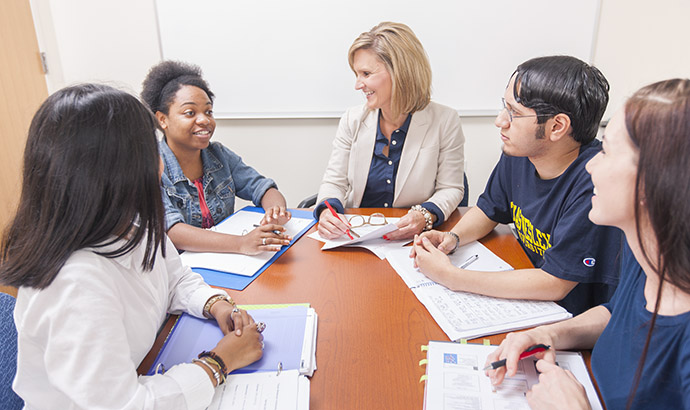Professor adds new dimension to photo class with Flickr

Photography class has moved far beyond the darkroom, and one Texas Wesleyan professor is helping her students prove that on a global level.
Associate Professor of Art Terri Cummings' students use Flickr, an online photo management and sharing application, to expand the classroom and add a new dimension to their photography experience.
By sharing their photos, her students will not only be assuming a greater responsibility for their work, but they will be encouraged to think critically by starting discussions and engaging with others in the Flickr community.
Allowing Time to Develop
Cummings saves the Flickr assignment for later in the semester so her students have a chance to develop their photography skills before sharing their work online.
"The initial pics I have them do are purposefully designed not to be any good," said Cummings, "so the next thing we do is separate the difference between a snapshot and a photograph. Then we send them back out with an understanding of aperture and depth of field and shutter speed and motion."
Once that phase is complete, Cummings will start incorporating social media into her assignments. She has two goals she hopes to accomplish through the use of Flickr.
"They'll be assuming the mantle of responsibility for their images to a broader audience. It's not 'our little secret' between the student and the teacher or the class with a small critique."
Her students will also be required to find and comment on other images from across the world and start at least one gallery that incorporates the work of other Flickr users.
"Essentially they're curating and thinking through what these things are," said Cummings.
Why Flickr?
Cummings looked at several different social media options, including Instagram, before choosing Flickr. She wanted her students to work with a rectangular format for their photos, but she also wanted them to be presenting their work in a more professional setting.
"Instagram, with all the filters, seemed more playful than business-like," said Cummings.
With Flickr, students have their photos linked directly to creative comments, but they're also able to license their own work and learn the ethical use of other people's images.
"The other aspect I liked in terms of a professional link is the connection with Getty Images," said Cummings. "Every few months they can put forth 10 images for Getty to consider taking into their photo banks."
With Flickr, her students are going to be thinking critically about photography, establishing themselves in a professional context and expanding their global interaction.
"They're training themselves to look at other people's images, not just creating their own. They're also building a broader context of critique and professional networking."







